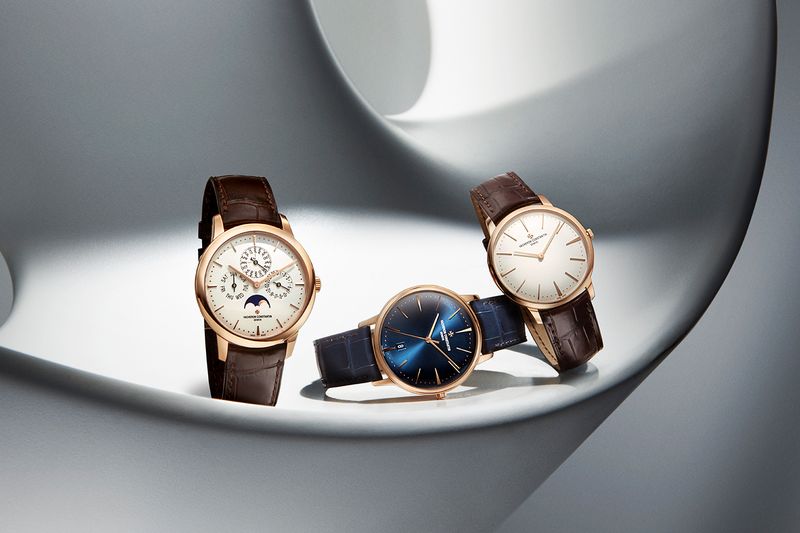THE JOURNAL
Why The Vacheron Constantin Patrimony Really Is The Epitome Of Traditional Watchmaking

Any proper understanding of the Vacheron Constantin Patrimony collection – actually, any proper understanding of Swiss watchmaking as a whole, for reasons that will become clear very soon – must start with the name. Patrimony. It is an English word, although not one that many would have cause to use in conversation, or be confident doing so. There is a formality to it, perhaps even a whiff of legalese, so it won’t be a surprise to hear that it derives from the Latin word patrimonium, and literally means “an inheritance from one’s father”. It’s etymologically close to “patron” and “patriot”. But we digress; patrimony took on a more metaphorical sense several centuries ago, to denote a collective cultural inheritance – “heritage” would probably be the closest equivalent in more everyday usage.
It is this idea of a treasured tradition of inherited knowledge and ideas that Vacheron Constantin was thinking of in 2004 when it launched the Patrimony collection. Because, after all, what is Swiss watchmaking if not the idea of following faithfully in the footsteps of the previous generations, preserving the institutional memory and _savoir-faire _(another mainstay of the Swiss watchmaking lexicon whose English translation doesn’t quite do it justice) that has been built up since the late middle ages? And, if you are Vacheron Constantin, the oldest continuously operational watchmaker, with more than 260 years on the clock, the idea seems even more appropriate.

In practice, everything Vacheron Constantin creates is a product of, and contribution to, its horological patrimony – pretty much by definition. But the Patrimony collection has a specific focus: an expression of sophisticated, restrained, minimalist watchmaking that appears timeless but in fact, belongs to the 1950s – a boom era for wristwatches that saw haute horlogerie manufactures such as Vacheron Constantin incorporate a mid-century aesthetic to their traditional codes. Hence printed numerals made way for applied baton hour markers, and discreetly dotted minutes took the place of railroad tracks. Simple geometry and efficiency of form reigns supreme – see the stick-shaped hour and minute hands, instead of dauphine, Breguet or feuille designs. One glance at the Patrimony Automatic, a 40mm 18k rose gold watch devoid of complications, and there’s no doubt you’re looking at a pure distillation of what a high-end watch should be.

It wouldn’t be much of a high-end watch range, however, if it couldn’t also take suitably high-grade complications, and that’s where the Patrimony Perpetual Calendar comes in. The construction of Vacheron Constantin’s Poincon de Geneve-accredited, ultra-thin perpetual calendar movement – calibre 1120 QP – is such that the traditional dial layout of three subdials plus a moon-phase at six is required, but what’s of note is how seamlessly this age-old arrangement is accommodated into the Patrimony’s design language; only the barest of depth changes for the subdial, and only the minimum notation on each. The moon-phase sits neatly above the logo, which moves to the base of the dial, and reinforces the symmetry of the layout.

This particular reference is perhaps even more of a perfect illustration of the importance of “patrimony” – very few manufactures make their own perpetual calendar complications, and only a handful can boast one as neatly engineered as this – the movement measures just 4.05mm thick, which allows the whole watch to come in at a whisker under 9mm (8.96mm to be exact). The base calibre on which the complication sits is derived from a Jaeger-LeCoultre movement also used by Audemars Piguet and Patek Philippe – something appropriate about that, too; the four finest names in Swiss watchmaking all linked by a shared heritage. But here, in this perpetual calendar – one of the most prestigious complications a watchmaker can master, in the most refined design, it could only be Vacheron Constantin.